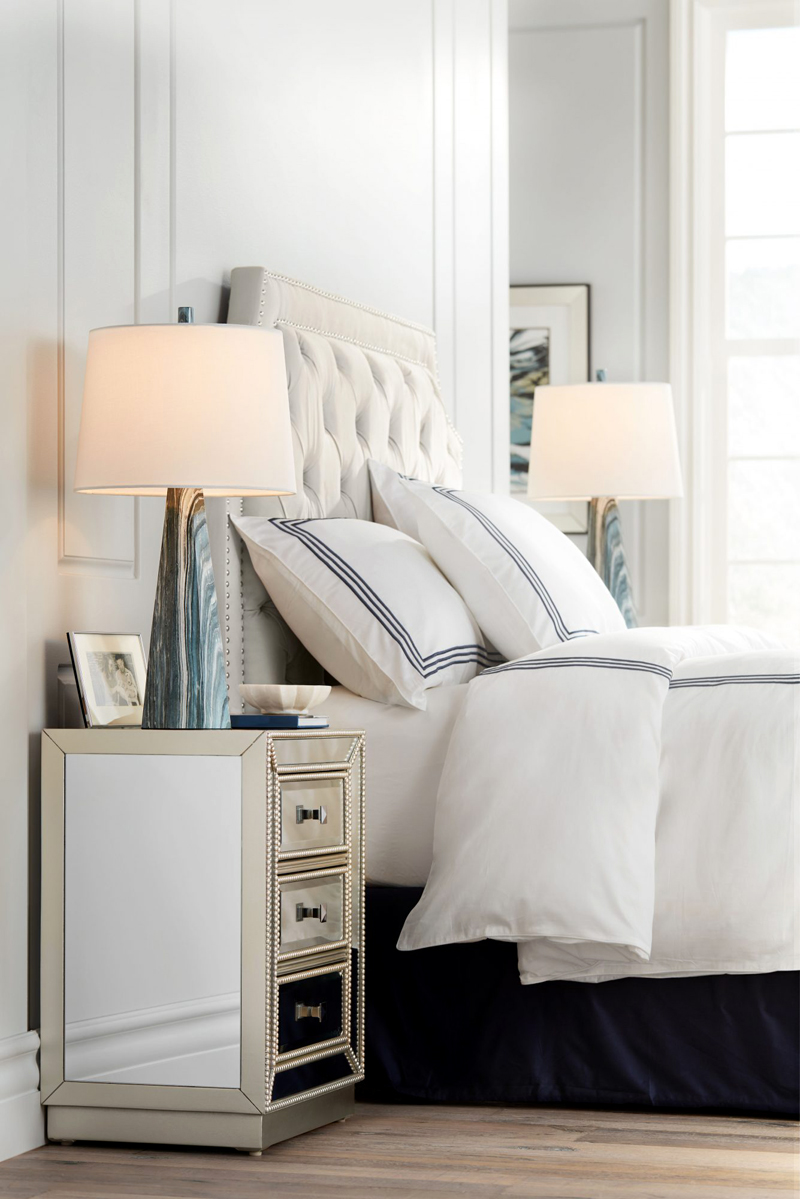![[feature] How to Light Your Home for the Best Sleep](https://blogger.googleusercontent.com/img/b/R29vZ2xl/AVvXsEgvpMsQBu9GBNuRqz9F9a8fG4gNAlNZM3JPNwVVO_xuaraSfRISZIEeocofUQhSoYF1GzWWgOWWQ23GdUR4GRphlxVDao7dQqqY0dn7OkvFuZ3gW9NIu0h9u8KdzvV5u74hFVofz3QACGOZ/s1600/buzz.dearjulius.com.jpg) |
| © Mark Edward Atkinson / Tracey Lee / Getty Images |
By Jessica Bennett, Better Homes and Gardens
Humans are programmed to rise with the sun and sleep when it sets, but that cycle doesn’t always coincide with our daily schedules. The good news: How we light our homes—especially our bedrooms—can help optimize our sleep cycle.
A good night’s sleep is critical for good health, and lighting can play a role in helping you get the best possible rest. The type of lighting, timing, and color of light can all have significant effects on your body's internal clock. These expert tips from the American Lighting Association will help you outfit your bedroom for a sleep-inducing setup.
First, let’s dig into how light—both natural and artificial—can either help regulate or interfere with your sleep schedule. Your body’s cycle of sleeping and waking, called the circadian rhythm, can be disrupted when you soak up too much of the wrong kind of light. During the day, the sun gives off bright blue-white light that makes you feel alert and awake. That’s because this type of light works to suppress melatonin, a hormone in your brain that helps you fall asleep.
As evening falls, your body’s melatonin levels naturally begin to rise, helping you wind down before bedtime. But if the artificial light in your home continues to mimic natural light even after the sun has set, your internal sleep clock can be thrown off track.
Although LED bulbs, which emit blue-tinted light like the sun, are a natural (and energy-efficient!) choice for daytime use, it’s important to switch to dimmer, warm light in the evening. This helps signal your brain that it’s time to produce melatonin and get ready to rest.
Outfit light fixtures in your bedroom with amber-hue bulbs (look for ones with a light temperature of about 2400-3000 degrees Kelvin). Alternatively, you can use dimmable, color-changing LED bulbs throughout the house, and adjust the temperature of the lights as the day goes on. If you’re using smart lighting, you can also customize a nighttime setting that automates an evening wind-down process.
In addition to bedside lamps and overhead fixtures, consider night-lights for better sleep. Choose ones with amber bulbs, which will be least disruptive to sleep during middle-of-the-night bathroom visits.
With these bedroom lighting ideas, a great night’s sleep is just a flick of the lightswitch away.
See more at: Better Homes and Gardens
Humans are programmed to rise with the sun and sleep when it sets, but that cycle doesn’t always coincide with our daily schedules. The good news: How we light our homes—especially our bedrooms—can help optimize our sleep cycle.
A good night’s sleep is critical for good health, and lighting can play a role in helping you get the best possible rest. The type of lighting, timing, and color of light can all have significant effects on your body's internal clock. These expert tips from the American Lighting Association will help you outfit your bedroom for a sleep-inducing setup.
How Lighting Affects Sleep
 |
| © The American Lighting Association |
First, let’s dig into how light—both natural and artificial—can either help regulate or interfere with your sleep schedule. Your body’s cycle of sleeping and waking, called the circadian rhythm, can be disrupted when you soak up too much of the wrong kind of light. During the day, the sun gives off bright blue-white light that makes you feel alert and awake. That’s because this type of light works to suppress melatonin, a hormone in your brain that helps you fall asleep.
As evening falls, your body’s melatonin levels naturally begin to rise, helping you wind down before bedtime. But if the artificial light in your home continues to mimic natural light even after the sun has set, your internal sleep clock can be thrown off track.
Home Lighting Tips for Better Sleep
 |
| © The American Lighting Association |
Although LED bulbs, which emit blue-tinted light like the sun, are a natural (and energy-efficient!) choice for daytime use, it’s important to switch to dimmer, warm light in the evening. This helps signal your brain that it’s time to produce melatonin and get ready to rest.
Outfit light fixtures in your bedroom with amber-hue bulbs (look for ones with a light temperature of about 2400-3000 degrees Kelvin). Alternatively, you can use dimmable, color-changing LED bulbs throughout the house, and adjust the temperature of the lights as the day goes on. If you’re using smart lighting, you can also customize a nighttime setting that automates an evening wind-down process.
In addition to bedside lamps and overhead fixtures, consider night-lights for better sleep. Choose ones with amber bulbs, which will be least disruptive to sleep during middle-of-the-night bathroom visits.
With these bedroom lighting ideas, a great night’s sleep is just a flick of the lightswitch away.
See more at: Better Homes and Gardens























